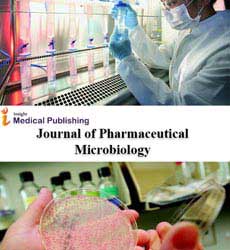Abstract
Anti-Candidal Activities of Leaf Extracts of Sansevieria aethiopica (Thunb): A Medicinal Plant Use in the Treatment of Oral Candidiasis in Eastern Cape of South Africa
Candida albicans infections are on the increase in the recent time and its resistance to most fungicides has been documented. We studied the effect of extracts of Sansevieria aethiopica (Thunb) on C. albicans ATCC 10231 and their possible mechanisms of actions were proposed. The minimum inhibitory concentrations (MICs) and minimum fungicidal concentrations (MFCs) of the extracts were determined using macrobroth dilution method while the structural changes in the fungus after treatment with the extract was determined by electron microscope. Standard methods were used to determine the effects of the extracts on the proton pumping, internal pH and ergosterol synthesis. The MIC of the extracts ranged from 1.5625 to 3.125 mg/ml while extracts-treated cells showed alterations in the morphology; wrinkled surfaces, shrinkages, tears and holes. Proton pumping activity was lower in the treatment group compare to the control while the internal pH of test fungus ranged between 5.40 and 6.03. We observed a decreased in ergosterol content in the candidal cells treated with the plant extracts. At ½MIC of acetone, methanol and ethanol extracts of the plants the amount of 24(28)-dihydroergosterol to ergosterol were 0.0972/0.5128, 0.0939/0.3571 and 0.1032/0.3702 g/dry weight respectively. The extracts were able to inhibit the growth, affect the intracellular pH (by extension the membrane integrity) and interfere with the sterol metabolism in C. albicans ATCC 10231.
Author(s):
Oluwole Moses David and Anthony Jide Afolayan
Abstract | Full-Text | PDF
Share this

Google scholar citation report
Citations : 36
Journal of Pharmaceutical Microbiology received 36 citations as per google scholar report
Abstracted/Indexed in
- Google Scholar
- Secret Search Engine Labs
Open Access Journals
- Aquaculture & Veterinary Science
- Chemistry & Chemical Sciences
- Clinical Sciences
- Engineering
- General Science
- Genetics & Molecular Biology
- Health Care & Nursing
- Immunology & Microbiology
- Materials Science
- Mathematics & Physics
- Medical Sciences
- Neurology & Psychiatry
- Oncology & Cancer Science
- Pharmaceutical Sciences

